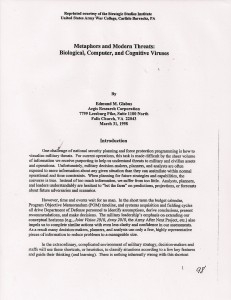The Global Futures Partnership (GFP) is a strategic “think and do tank” that undertakes unclassified global outreach for CIA and other Intelligence Community elements on the most important issues facing the intelligence community today and in coming years. It conceptualizes and implements interdisciplinary and multi-organizational projects on key intelligence issues with leading thinkers from academia, business, strategy, and intelligence consultants.
Below is the citation for the award given to the visionary, founder, and core catalyst within the GFP, followed by two CIA seals: the one on the left leads to the pro forma page on GFP, sadly not offering access to its unclassified and often brilliant productions over the past several years, and the one on the left offers a link to a presentation on “Meeting 21st Century Transnational Challenges: Building a Global Intelligence Paradigm” by Roger George, possibly the most tangible evidence of GFP's influence on CIA's leadership.
OSS '02: 21st Century Emerging Leadership Award. Global Futures Partnership, Central Intelligence Agency. Under the leadership of Carol Dumaine with her extraordinary vision, the Global Futures Partnership has created strategic learning forums bringing the rich perspectives of the outside world into the classified environment in a manner never before attempted. This official but revolutionary endeavor nurtures an outside-in channel for integrating a diversity of perspectives. It is a vanguard toward a future in which the lines between national and global intelligence, and between governmental and nongovernmental intelligence, are blurred into extinction.


The GFP is not to be confused with the Open Source Center (OSC). The first is a visionary outreach elements that seeks to share information and achieve multi-national sense-making, in one instance working with up to 35 countries. The OSC is a bureaucratic unit that classifies everything it creates and refuses to engage with any countries other than the standard English-speaking allies and a couple of others totalling eleven including the USA, Canada, the UK, Australia, you get the idea….
The CIA leadership never properly supported the GFP. Its vision










